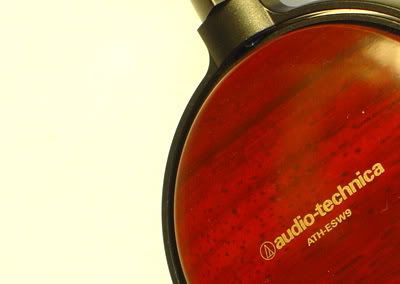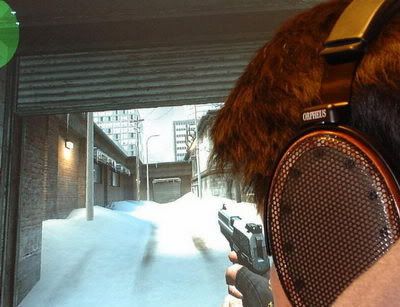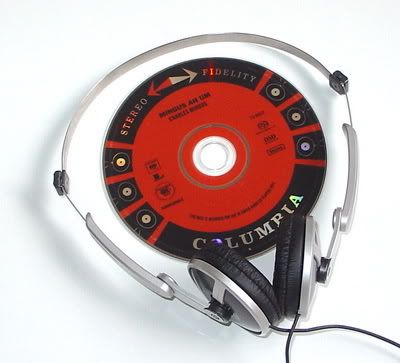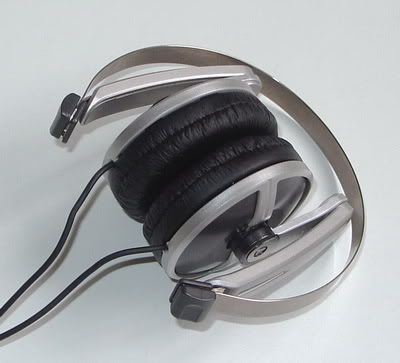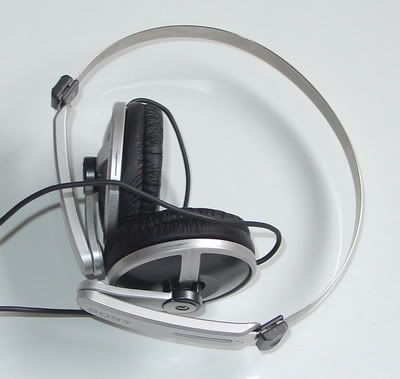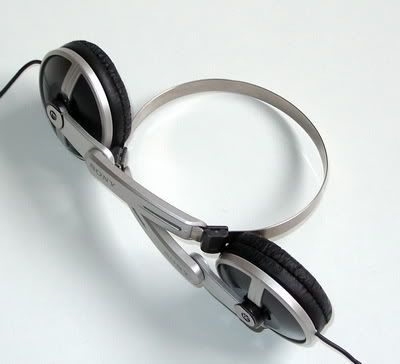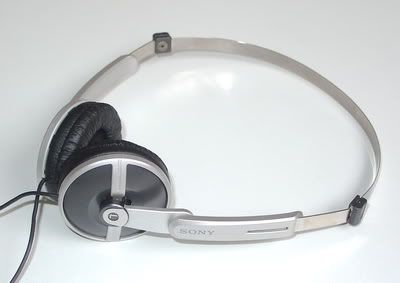The newest Triport headphones from Bose are of a folding On-Ear design, and are intended to address a more mobile user than the older, non-folding Around-Ear Triport. The OE usually commands a price premium over the AE - perhaps unsurprisingly so, given the added accessories and the higher grade of materials used on the phone.
DESIGN & PRESENTATIONThe Triport OE has a contemporary design which is quite smart, if not so successful when actually on the head due to its rather “broad-shouldered” look once the ratcheting headband rails are slightly extended. The phone is a very high quality item in terms of construction. Materials are good with well-chosen plastics, padding in the right places, and cast aluminium alloy used at points of higher stress such as the folding joints.

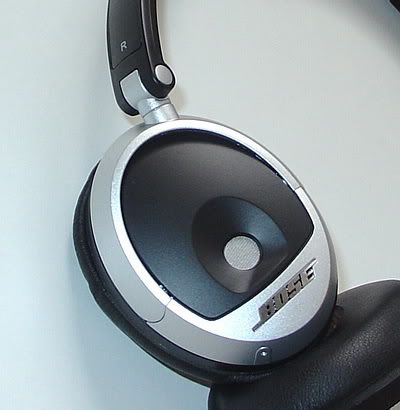
The cable actually attached to the earcup abruptly ends just half an inch or so from the earcup, terminated in a 3.5mm standard stereo plug. Two extension cords are supplied to plug into this – a short 16” cable for remoted and jacket-pocketed players, and a longer 45” article for more traditional use. The plug is very standard and there is no obstruction to using third-party cables for longer or shorter runs, unlike say Sennheiser’s replaceable cables.
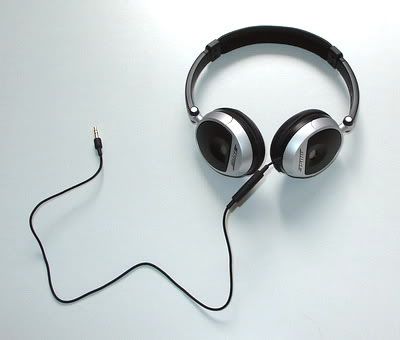
While it’s not a rugged design as such, it feels well made and seems like it will last a while if used properly. The phone folds flat with the cups rotating to a flat position and then folding into the headband. The folding process is an absolute no-brainer. The package is shipped along with a smart, if rather bulky carrying case which holds both the phone and the two extension cords.

Bose quotes no specifications for this phone from what I can see, unlike the older AE’s for which they quote efficiency and impedance. A nominal electrical measurement of the phones reveals them to be a ~54-ohm load (but of course, effective impedance usually changes over the frequency response of a phone and I’m not equipped to measure that). They seem pretty efficient, delivering decent levels of sound from reasonable volume settings on most portables.
ISOLATION & COMFORTThe phone has an unusual design for the ear cushions which effectively seals the driver to the ear, and this is one aspect of why the phone has a high degree of isolation for something so compact.
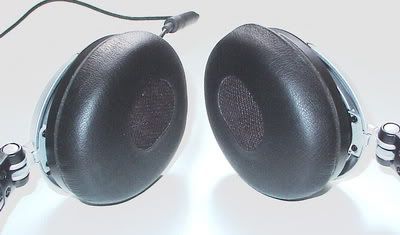
This has certain sonic implications we’ll look at later. While it doesn’t keep out as much noise as in-ear monitors the level of isolation on offer is very usable, and would be ideal for most commutes.
As you can see, the Triport OE is notably more compact than the Triport AE, and is clearly better suited for the regular traveller.
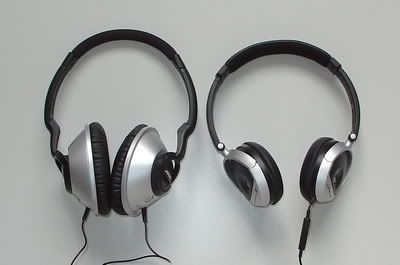
And the big achievement is perhaps that Bose have managed to isolate a phone pretty well, have it as a compact on-ear design yet have it remain pretty comfortable. The key is the relatively low pressure exerted on the ears and how the oval cups sit on the ear without creating large areas of point pressure.
SOUND
A long time ago, some members of Head-fi adopted a phase "Fart Cannon" - a headphone whose bass response was bloated / slow so all bass hits came like a wave of flatulence. While the Sony MDR-V700DJ (a mediocre phone by all yardsticks) was the recipient of the title back then, going straight from the Bose Triport OE to the V700DJ makes the Sony sound like the heights of hi-fi.
You might say "Say it ain't so bangraman, surely it isn't that bad?"
I would say "It is."
I’ve avoided a one-word summary here because it’s worth mentioning just how excessive this phone’s bass is, partly I suspect thanks to the unusual earcup design. And it’s not a tight, well defined large slap of bass. It’s basically audio diarrhoea that's more commonly heard in cheap & nasty car stereo systems.
And because of this, the OE is surely the king of Fart Cannons. Because of the constant assault of this bass, it's also very fatiguing to listen to. I could mention soundstaging, accuracy of the trebles and mids, etc – but it’s pointless. The bass completely dominates the scene the moment something in the mid-bass downwards comes along… which is let’s face it, most music. You’d think, hey, “I’ll slap some classical on and figure out whether this phone can resolve!” – nope, the cellos are low enough to let rip the Fart Cannons and kill any attempt at gauging this phone fairly.
Quoted from the Bose website: “You'll hear deep lows. Clear mids. Sweet highs. Distinct separation of instruments. Try them with your favorite tracks and you just may find nuances you never heard before.”
My response would be: “Bollocks.”
CONCLUSION
A well designed and well built phone in terms of construction, and one which provides good isolation while retaining excellent comfort for a supraaural closed phone. Add the adjustable cord length and physically it has all the elements of a winner. But of course a headphone’s sole actual purpose is to produce sounds and this is where it falls flat, unless your idea of quality audio is what comes thudding out of a low-rent car tuner’s meeting.
However even if you like bass, and even if you possess an MP3 player that could do with a bit of bass boost (like the iPod), I very much doubt that the Triport OE’s rendition of it will leave you feeling anything but nauseated. I have nothing to say about the sound apart from that - because there are no saving graces. Avoid like the pla… no, I’ve already written that before, and we need to take it up a notch. Avoid like extremely contagious Ebola.
Link:
Bose
